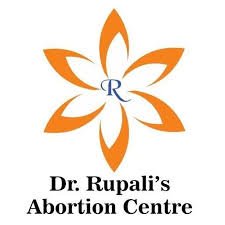
Unsafe abortion has serious implications on women's health and life, hence a critical public health problem. With improved medical care and legal avenues to undergoing a safe abortion, many women may still resort to unsafe methods because of ignorance, stigma, resource unavailability, or inability to pay or access a trained provider. Unsafe abortion is a preventable cause of maternal disease and death in most of the world.
Unsafe abortion is principally a process done by individuals who don't have the right skills and in environments that don't provide even the most basic of medical standards. This may mean self-treatment with abortion pills without proper advice, seeking untrained persons to perform the procedure, or visiting an unhygienic and unregulated facility. Unsafe abortion is a danger of a serious outcome. Injury to reproductive organs, severe bleeding, infection, and failed abortion are frequent outcomes, which in certain instances can result in death. Unsafe abortion, besides helping to create the immediate hazards, may also cause longer-term issues of infertility, chronic pain, and mental health issues of depression and anxiety.
Globally, nearly 45 per cent of induced abortions are classified as unsafe, and the prevalence is highest in countries with limited access to safe services. In India, more than half of abortions are estimated to be performed in an unsafe manner, with the consequence that thousands of maternal deaths occur every year. These figures further underscore the imperative to provide accessible and safe reproductive health services, accompanied by widespread public education about reproductive rights and health.
Multiple factors form the underpinnings of the continued occurrence of unsafe abortion. Ignorance of safe methods and legal entitlements is a main impediment. Most women are unaware that abortion is lawfully available under specific circumstances, or they wrongly believe a partner or parents need to provide their consent. Social and cultural shame also offer obstacles to women in accessing medical treatment, inclining them to seek out other means which are carried out clandestinely or without adequate medical intervention. Geographical and economic obstacles intervene, too, as rural and marginalised women will have less means of accessing accredited facilities or skilled health workers. The repercussions of unsafe abortion do not end at the body.
The guilt, fear, or anxiety of the choice and its outcome is usually the emotional and psychological damage women can suffer. Family and communities can also have indirect consequences, as complications arising from unsafe procedures can have a loss of income, longer hospital stays, and other social and economic outcomes. Strategies for reducing the rate of unsafe abortions should aim at education and availability of safe and skilled health care service, as well as developing evidence-based choices for women over their reproductive health. Public awareness campaigns can disseminate information regarding legal rights, safe practice in medicine, and how to obtain skilled healthcare providers. Health infrastructure has to guarantee the presence of accredited institutions, well-trained health practitioners, and accessible confidential health care, particularly in rural and low socioeconomic communities. Post-abortion care is required to treat physical and psychological healing, hence utilizing safe materials to treat emotional health issues, as well as physical issues, is part of post-abortion care. Extension of access to contraception, alongside family planning services, is also essential in the prevention of unplanned pregnancy and attendant abortion. Informed knowledge of one's own reproductive status, combined with access to contraceptive tools, encourages autonomous decision-making and deters recourse to unsafe practice.
Unsafe abortion can be averted. When the woman is made aware of her rights and has access to safe healthcare services that she trusts, then the sickness and deaths due to unsafe abortion can also be averted. When we institute the mechanisms to enable this awareness, trust, and access - it's not just a health issue - it's an issue of upholding the human rights and dignity of women.
Raising awareness, improving healthcare access, and providing true information are essential steps of action in making sure that